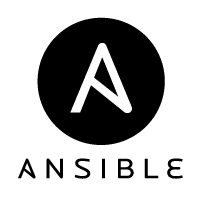Tag: CentOS 7
Installing cPanel/WHM On CentOS 6 & 7
What is cPanel?
cPanel is a server control panel which allows users the ability to access and automate our Cloud Dedicated, VPS, and Dedicated server tasks and, provides the tools needed to manage the overall server, their applications, and websites.  Some features include the capability to modify php versions, creating individual cPanel accounts, adding FTP users, installing SSL’s, configuring security settings, and installing packages to name a few. cPanel and WHM have a vast range of customizations and configurations that can be completed to further personalize your platform specifically for your needs. It also includes 24/7 support from cPanel as well.
Some features include the capability to modify php versions, creating individual cPanel accounts, adding FTP users, installing SSL’s, configuring security settings, and installing packages to name a few. cPanel and WHM have a vast range of customizations and configurations that can be completed to further personalize your platform specifically for your needs. It also includes 24/7 support from cPanel as well.
How to Configure Apache Virtual Hosts on CentOS 7
Today, we will be reviewing how to configure Apache virtual hosts on a CentOS 7 VPS server or Dedicated server. If you host websites, chances are you are hosting more than one. If so, knowing how and why these virtual hosts work should allow you to better understand why they are needed. By default, Apache can host only one document root for all requests, which likely isn’t what you want to happen.
Why Choose CentOS 6 or 7
Introduction
The servers that run our applications, our businesses, all depend on the stability and underlying features offered by the operating system (or OS) installed. As administrators, we have to plan ahead and think to the future of how our users will use the machines we oversee while simultaneously ensuring that those machines remain stable and online. There are numerous operating systems to choose from; however one of the most popular, most stable, and highly supported OSes is CentOS. A combination of excellent features, rock-solid performance stability, and the backing of enterprise-focused institutions such as Red Hat and Fedora have led to CentOS becoming a mainstay OS that administrators can count on.
How To List Users in CentOS 7
Adding a user in CentOS is a common task for most Linux admins. Users have unique username’s and occasionally you may wonder if a username is in use or need other details about the user (like their group ID). We’ll show you how to see a list of users after logging into your Liquid Web CentOS 7 server. Once you've logged in via SSH, you'll be able to run the commands below and get the information you need. Let’s get started!
Common Postgres Tasks on CentOS 7
This guide walks you through some common tasks surrounding a Postgres server. In this tutorial, we’ll cover installing Postgres, creating new databases and users, backing up databases, and more! Let’s dig in!
This article outlines the procedure for replacing the native MySQL®️ or MariaDB®️ service that is preinstalled on any typical Plesk Onyx 11 CentOS 7 server. The procedure outlines removal of the existing MySQL related binaries and replaces them with an adequate version of the Percona binaries. Once these Percona binaries are in place, a typical multistage MySQL Incremental version upgrade is processed to bring the existing databases and Percona binaries to the desired Percona 5.7 version.
Install Java 8 on CentOS 7
In this tutorial, we’ll be showing you how to install Oracle’s Java 8 programming language specifically onto a CentOS 7 server. This simple object-oriented language is used for many of the applications and websites you come across today. Let’s jump right in!
Transfer an SSL to Ubuntu 16.04 or CentOS 7
SSL certificates have become a de facto part of every website. If you don’t yet have an SSL on your site to encrypt data, you should. Rather than showing an extra layer of security on sites protected by SSL, modern browsers instead now display a warning when a website does not have an SSL, essentially requiring sites to maintain their positive image.
How to Use Ansible

Ansible is an easy-to-use automation software that can update a server, configure tasks, manage daily server functions and deploys jobs as needed on a schedule of your choosing. It is usually administered from a single location or control server and uses SSH to connect to the remote servers. Because it employs SSH to connect, it is very secure and, there is no software to install on the servers being managed. It can be run from your desktop, laptop or other platforms to assist with automating the tedious tasks which every server owner faces.
Our previous article in this series focused on defining and fitting MPM to match your environment. Building from our last tutorial we will be discussing specific details on how to adjust the previously mentioned Apache configuration directives on the various types of Liquid Web VPS servers as well as Core managed servers.
Our Sales and Support teams are available 24 hours by phone or e-mail to assist.

